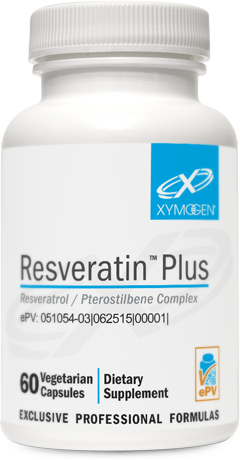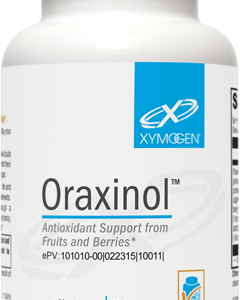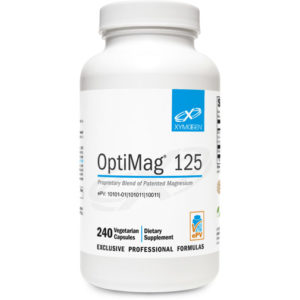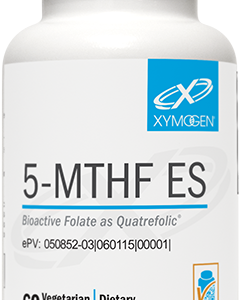Scientific Information/Data
Resveratrol (RES) (3,5,4’-trihydroxystilbene) is a stilbenol derived from stilbene, a natural plant product. RES is found in varying amounts in grapes, various berries, plums, peanuts (and pines). Oral resveratrol is rapidly metabolized via sulfate conjugation by the intestine/liver.[1] The methyl capping of all free hydroxyl groups (as in Pterostilbene) results in dramatically higher hepatic metabolic stability, intestinal absorption and membrane transport compared to unmethylated RES.[2,3] Quercitin, pterostilbene and resveratrol are synergistic antioxidants, with quercitin seemingly aiding in the absorption of resveratrol.*[4]
Stilbenols are polyphenolic compounds that have cell-protecting properties.[5] For RES, this action has mostly been linked to growth and death regulatory pathways. Research published in 2008 also demonstrated RES’s contribution to the maintenance of genome stability. Pterostilbene and quercetin, structurally-related and naturally-occurring, small polyphenols, show longer half-life in vivo than unmethylated resveratrol and have been shown to work synergistically to protect cellular health.*[6]
As exciting as its role in chemoprotection, is resveratrol’s ability to produce changes associated with longevity. These include increased insulin sensitivity, reduced IGF-1, increased AMP-activated protein kinase and peroxisome proliferator-activated receptor-gamma coactivator 1 alpha activity, increased mitochondrial number and improved motor function. RES opposed the effects of the high calorie diet in 144 of 153 significantly altered gene pathways.[7] RES activates sirtuins including SIR2, a special longevity cellular[8] and SIRT1 that helps protect nerve cells.*[9]
In vitro, ex vivo and animal experiments have shown that the attributes of RES such as its powerful antioxidant activity, modulation of hepatic apolipoprotein and lipid synthesis, inhibition of platelet aggregation, and inhibition of human platelet and neutrophil production of pro-atherogenic eicosanoids favor protection against atherosclerosis.*[10]
Resveratrol’s numerous anti-inflammatory properties may explain why it has so many far-reaching health benefits. It inhibits synthesis and release of pro-inflammatory mediators, modifies eicosanoid synthesis, and inhibits activated immune cells. By inhibiting either NF-(kappa)B or the activator protein-1 (AP-1), resveratrol also appears to inhibit inducible nitric oxide synthase (iNOS) and cyclooxygenase-2 (COX-2).[11] Specific human dosing to support a healthy inflammatory response has not yet been established.*[12]
*These statements have not been evaluated by the Food and Drug Administration. This product is not intended to diagnose, treat, cure, or prevent any disease.
References
- Wenzel E, Somoza V. Metabolism and bioavailability of trans-resveratrol. Mol Nutr Food Res. 2005 May;49(5):472-81. [PMID:15779070]
- Walle T, et al. High absorption but very low bioavailability of oral resveratrol in humans. Drug Metab Dispos. 2004 Dec;32(12):1377-82. [PMID:15333514]
- Wen X, Walle T. Methylated flavonoids have greatly improved intestinal absorption and metabolic stability. Drug Metab Dispos. 2006 Oct;34(10):1786-92 [PMID: 16868069]
- Morimitsu Y, Sugihara N, Furuno K. Inhibitory effect of flavonoids on sulfo- and glucurono-conjugation of acetaminophen in rat cultured hepatocytes and liver subcellular preparations. Biol Pharm Bull. 2004 May;27(5):714-7. [PMID: 15133252]
- Fresco P, Borges F, Diniz C, Marques MP. New insights on the anticancer properties of dietary polyphenols. Med Res Rev. 2006 Nov;26(6):747-66 [PMID: 16710860]
- Ferrer P, et al.Association between pterostilbene and quercetin inhibits metastatic activity of B16 melanoma. Neoplasia. 2005 Jan;7(1):37- 47. [PMID:15736313]
- Baur JA, et al. Resveratrol improves health and survival of mice on a high-calorie diet. Nature. 2006 Nov; 16;444(7117):337-42. [PMID: 17086191]
- Stefani M, et al. The effect of resveratrol on a cell model of human aging. Ann N Y Acad Sci. 2007 Oct;1114:407-18. [PMID: 17804521]
- Tang BL, Chua CESIRT1 and neuronal diseases. Mol Aspects Med. 2008 Jun;29(3):187-200 [PMID: 17397914]
- Soleas GJ, Diamandis EP, Goldberg DM. Resveratrol: a molecule whose time has come? And gone? Clin Biochem. 1997 Mar;30(2):91- 113 [PMID:9127691]
- de la Lastra CA, Villegas I.Resveratrol as an anti-inflammatory and anti-aging agent: mechanisms and clinical implications. Mol Nutr Food Res. 2005 May;49(5):405-30 [PMID:15832402]
- Hougee S, Faber J, Sanders A, de Jong RB, van den Berg WB, Garssen J, Hoijer MA, Smit HF. Selective COX-2 inhibition by a Pterocarpus marsupium extract characterized by pterostilbene, and its activity in healthy human volunteers. Planta Med. 2005 May;71(5):387- 92. [PMID: 15931573]






